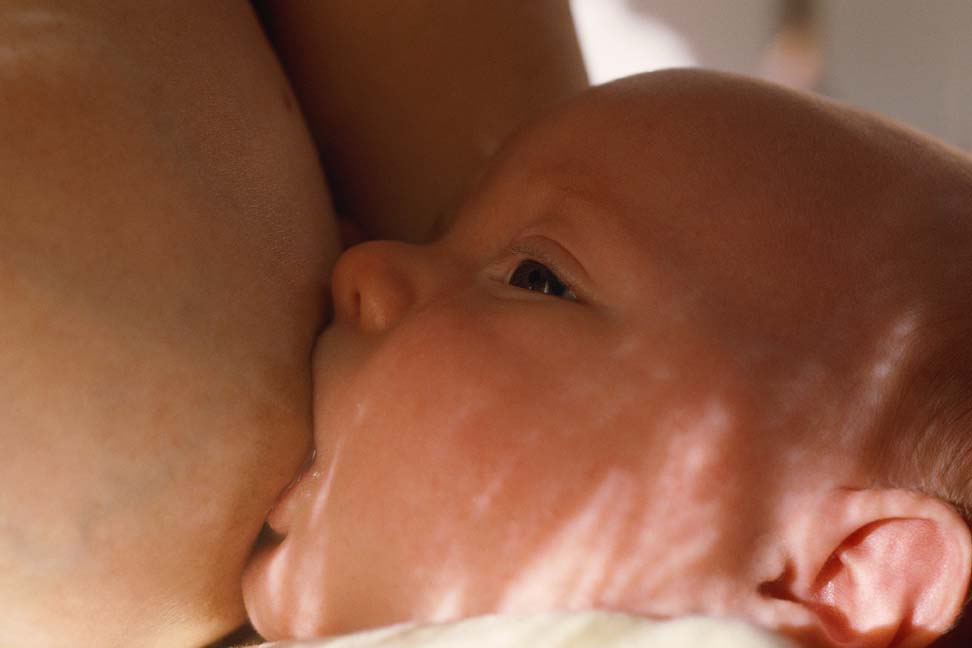Impetigo is a mild skin infection that is common in children. It is caused by common skin bacteria and is easily treated with topical or oral antibiotics.
What are the symptoms?
- It usually appears as a patch of red, irritated looking skin with some crusted fluid or yellow-brown scab on top of it. It looks like a sore or patch of sores.
- It may be a patch of small red bumps or pimples, or these may appear near the patch of red skin.
- It sometimes appears as small pus-filled bumps or blisters that break and leave a little collar of dead skin around the bump. This is often seen in the diaper area in babies and toddlers.
- The patches or bumps are superficial and do not cause deep swelling like a boil.
- It usually spreads as the child picks at it or rubs it.
- Any wound or break in the skin that fails to heal or is getting bigger or looking worse is usually infected.
- Sometimes, strep throat infection occurs, usually with fever and sore throat.
What causes impetigo?
Our skin is covered in bacteria, and any break in the skin can lead to infection. Insect bites, scratches, scrapes, and cuts are common in children, especially in the summer. Children also get impetigo around their noses from rubbing them, sometimes during or after a cold; sometimes the germ that causes impetigo can infect the nose. This is more common in the winter. Children are usually not diligent hand washers and easily spread germs as they rub or scratch bites and scrapes. Impetigo is usually caused by Streptococcus or Staphylococcus bacteria.
What should I expect?
It starts as red bumps or pimples, or may just appear as a patch of red skin with some crusting or scab. If untreated, it usually remains a mild infection but will continue to spread. With treatment, the infection usually resolves in a week. The skin may not return to normal for up to a year. Scars are unlikely unless the skin was damaged from picking at the sores. Occasionally, strep throat may be associated with impetigo. In this case, your child should develop strep throat symptoms (fever, sore throat, nausea, vomiting, headache, and/or a fine rash all over).
How is it treated?
- Impetigo usually requires an antibiotic. A topical ointment usually works for small infections. Over-the-counter antibiotic ointments do not work very well because they do not work as well at killing the germs that cause impetigo.
- There are several prescription antibiotic ointments (mupirocin, retapamulin) that work very well. It should be used 2-3 times a day until the infection is resolved, usually 5-7 days.
- If the infection is large or in multiple areas, or is spreading, an oral antibiotic can be used instead.
- Keep the area clean and dry; wash it gently. If scabs come off it may bleed a little.
- You can cover with a bandage to keep the child from rubbing or scratching and to help keep it from spreading.
- Try to keep your child from touching it. Have her wash her hands frequently, and keep the fingernails cut short.
Is it contagious?
- Yes, impetigo is contagious. Children can spread it to one another because they often touch or scratch sores, don’t often wash their hands, and often touch one another as they play.
- Children with impetigo should not share towels or washcloths with family members.
What complications should I look for?
- The infection may spread and keep developing new patches or bumps.
- The infection may become more serious and form an abscess (boil), a much deeper and painful infection.
How can I prevent my child from developing impetigo?
Good hygiene is probably the best way. Teach your child to wash his hands often, or use hand sanitizer. Try to keep your child from scratching or picking at bites, scabs, and scrapes. Keep her fingernails cut short.
When can my child return to school?
- Children should be out of school or daycare until treatment has been started for 24 hours. Children with mild infections can usually return once ointment is started as long as the infection is covered with a bandage.
When should I seek further care?
Call your doctor for an appointment the same day or seek after-hours care if:
- Redness is spreading, especially with red streaks.
- Your child starts to feel or to act sick.
- A deeper infection (abscess, boil) develops.
Call your doctor for an appointment today or tomorrow if:
- The patch or number of bumps is increasing after 48 hours of treatment.
- A fever and/or sore throat develops.
- The infection is not healing or improving significantly after a week of treatment.


